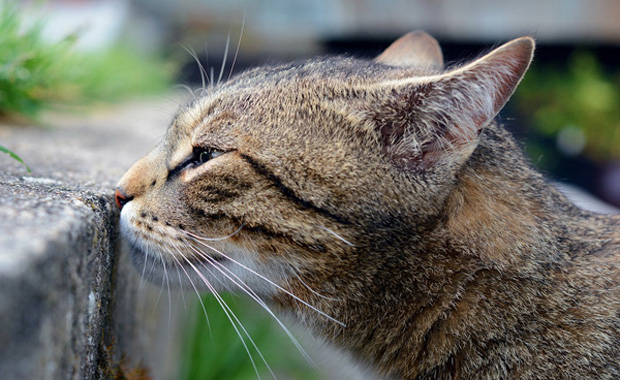Cats have evolved into efficient communicators. One way they broadcast information to each other is through “marking.” In some ways, marking is similar to e-mail and text messaging — the sender and the recipient do not have to be together. It is a form of communication that leaves messages for other animals through scent and visual clues. These contain a dossier of information about the individual that lingers long after the communicator has left.
Marking defines territories and sends alerts to intruders while broadcasting vital information about the marker. The behavior has other functions besides staking claims; it helps attract mates, and it identifies family and friends. Marking also helps cats habituate to new environments and indicates ownership of places and objects. It also is a sweet way of demonstrating familiarity with people and other animals they are bonded to.
Cats mark in many ways — some are endearing, others frustrate us. How, when, and where cats mark communicates a wide variety of messages.
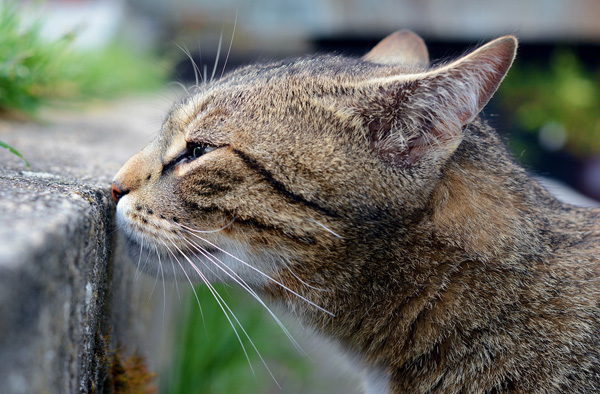
The anatomy of marking
Felines mark through pheromones that are secreted through glands, located in a number of places on their bodies. Some of the locations may surprise you. Scent glands are located on temples, corners of mouths, beneath chins, and on paw pads. They are also found under the base and along the sides of tails.
Cats mark for a number of reasons and in multiple ways.
Kneading
Marking starts soon after birth. Although born deaf and blind, kittens are born with a sense of smell. Smells, along with the vibration of mom’s purrs, guide the little ones to their first meals. They then knead as they nurse, claiming a nipple as their own through scent secreted from the glands on their paws. Their personal scents guide them back to their preferred nipple, important when competing with siblings for a place at the milk bar.
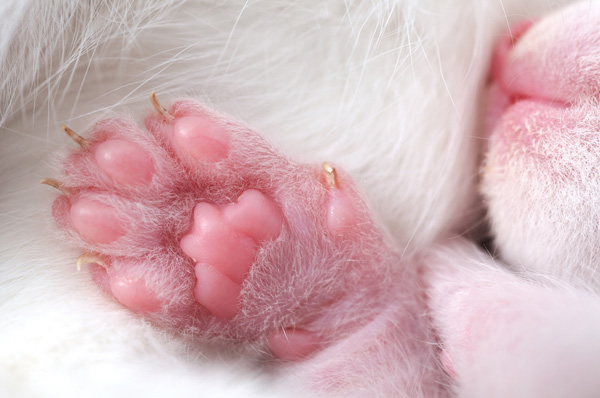
Cheek-rubs and head-bunts
Cat parents are delighted when their cats greet them with cheek-rubs and head-bunts. Indeed, these are sweet ways kitties greet people and animals they trust and are bonded to. Cheek-rubs and head-bunts do double duty. Welcoming, friendly pheromones from their scent glands are rubbed onto the person or animal. In addition to saying hello, cats mingle their scent with the scent of their loved ones, informing other animals of the friendly relationships.
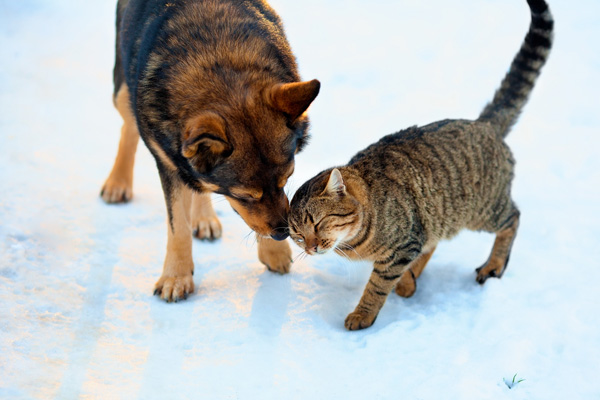
Cats in unfamiliar environments orient themselves to their new digs by rubbing their cheeks on objects. Cheek-rubbing helps them feel secure in places they are unaccustomed to and also helps them recognize scent landmarks. Kitties don’t head-bunt unfamiliar objects — that is reserved for familiar people and animals.
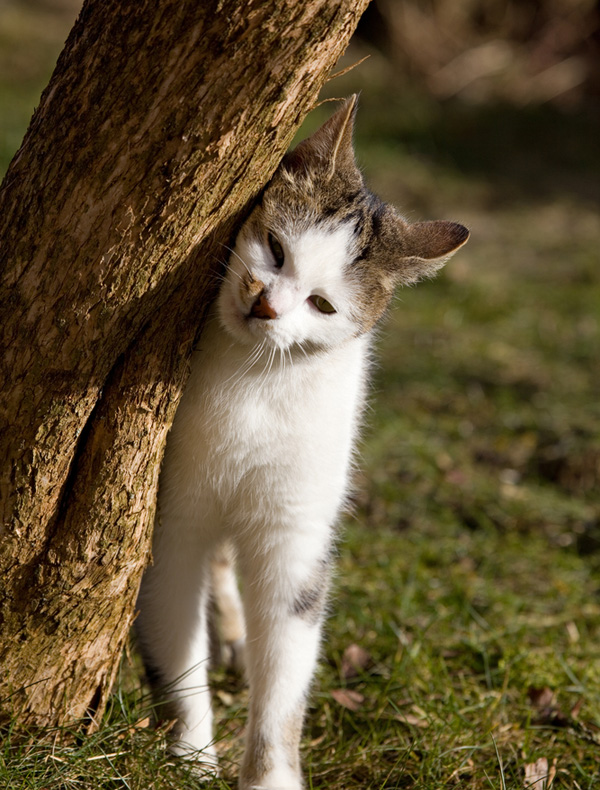
Scratching
All cats, even those who are declawed, scratch or go through the motions of scratching. It is a complex behavior that is done for a number of reasons, one of which is marking. Information about the scratcher is broadcast through scent glands on the paw pads and visually from the scratches. The scratched, pawed areas serve as territorial sign posts.
The favorite places indoor cats scratch usually include entrances and exits to the home, sleeping and eating areas, regularly used routes, and areas commonly shared by other cats. Many people are not pleased when their kitties scratch the corners of the sofas or the rugs. Although cats have to scratch, they do not have to scratch couches and carpets. They can be trained and redirected to scratch appropriate furniture.
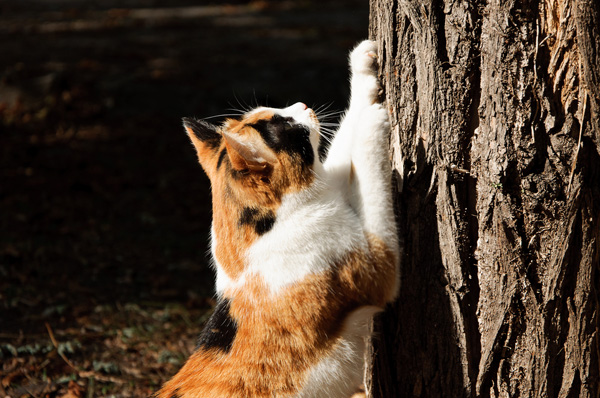
Middening
It is more common for cats who live outside to defecate in conspicuous areas and not cover their feces. Although middening might be another way of staking out territories, spraying and urinating are more commonly used for marking. Indoor cats rarely mark their territory through middening, but depending on the circumstances, it occasionally occurs.
There are many other reasons indoor cats may defecate outside their litter boxes. These include medical issues, parasites, poor litter box maintenance, household stress, and inter-cat problems. Additionally, cats who are sick sometimes form an unpleasant association with their litter boxes and will avoid them. Before assuming cats are middening, you should have them examined by their veterinarians for other possible reasons for the behavior.
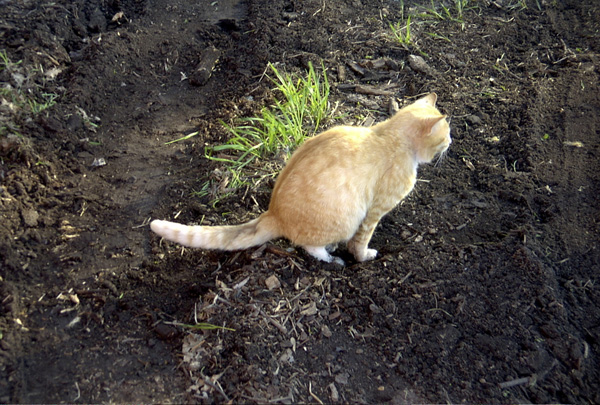
Spraying
Urine marking is a particularly odiferous way cats mark. Urine is a powerful communication tool — cats can tell a great deal about each other from urine. The most common form of this behavior is spraying. It’s used mostly for marking territories, and there are many other reasons for the behavior.
In addition to marking territories, intact cats advertise for mates by spraying. Pheromones in the urine indicate the male’s reproductive availability and where the females are in their cycle.
Although intact cats are the most guilty of the behavior, fixed cats sometimes spray too. Some mark territories or spray when they feel threatened or insecure. Neighborhood cats, inter-cat challenges, and sudden changes can also trigger the behavior. Spraying objects fosters feelings of safety and can help cats get used to new environments. Their smell functions as markers that are reassuring and aid in identifying landmarks in unfamiliar places.
When felines spray, they back up to a conspicuous object or vertical surface, then raise and quiver their tails while spraying a small amount of urine. The odor is distinctively pungent, different than pure urine, because chemicals are released into the spray. This marking is similar to leaving a calling card. It communicates vital information about the sprayer. It is no coincidence that spraying is done at a height perfect for cats to sniff. Depending on the cats and the circumstances, spaying and neutering usually stops the behavior.
Before assuming a kitty is marking, have her thoroughly examined by a veterinarian in order to rule out any medical issues. Additionally, other possible reasons for the behavior need to be investigated.
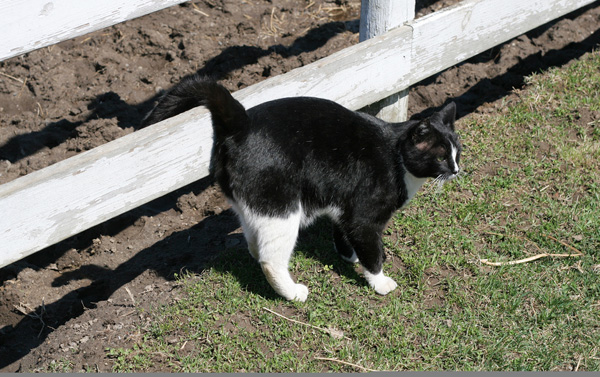
Marking has many functions — it is used to show affection and greet familiar animals and people. It also communicates ownership and territorial boundaries. Marking attracts mates and help cats feel secure. It is an effective way of dispersing information without risking being harmed from direct confrontations.
Please follow Marilyn on Facebook!
Got a cat behavior question for Marilyn? Ask our behaviorist in the comments below and you might be featured in an upcoming column. If you suspect a behavioral problem, always rule out any possible medical issues that may be causing the behavior by first having your cat examined by a veterinarian. Marilyn can also help you resolve cat behavior challenges through a consultation.
Marilyn, a certified cat behavior consultant, owner of The Cat Coach, LLC, solves cat behavior problems nationally and internationally through on site, Skype and phone consultations. She uses force free methods that include environmental changes, management, clicker training and other behavior modification techniques.
She is also an award winning author. Her book Naughty No More! focuses on solving cat behavior problems through clicker training and other force-free methods. Marilyn is big on educationÔÇöshe feels it is important for cat parents to know the reasons behind their cat’s behaviors. She is a frequent guest on television and radio, answering cat behavior questions and helping people understand their cats.
Understand your cat better with these articles from Catster:

